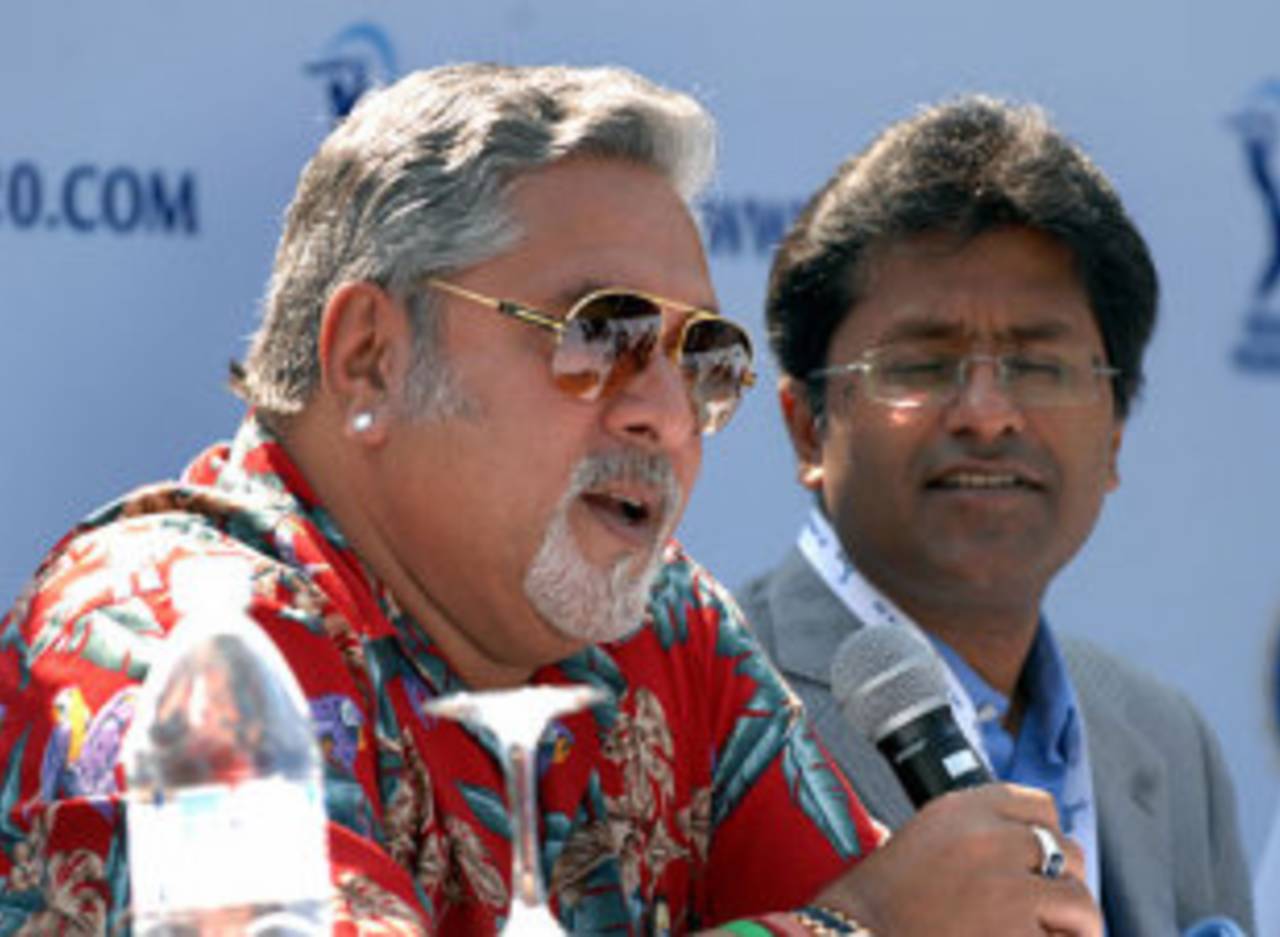The IPL's decision to set a base auction price of $225 million for rights to the next two franchises joining the league has thrown up a flurry of questions. Nitin Sundar attempts to answer some of them.
$225 million as a base price for the auction - isn't it an absurd figure? Especially in these times?
The base price for the second round may be more than four times what it was in the first auction, and twice the cost of the most expensive franchise (Mumbai Indians) at the time. Yet it is not an absurdly over-confident number. In January 2008, when the first lot of franchises went on sale, the IPL was an unknown beast. The Twenty20 format was yet to prove its viability and, despite the success of the franchise-based model in other sports, it was a radically new idea for cricket, a sport that has always been driven by international competition. The presence of so many unknowns made the IPL a high-risk venture for the first batch of investors. The reserve price was set low to compensate the bidders for the inherent risk they were taking.
Two seasons later, the equation has changed completely - the IPL has proved to be a winner for everyone, guaranteeing profits even for franchises that do not perform well on the field, and Twenty20 is clearly the game's biggest money-spinner. Investing in a franchise now involves a much lower risk - hence the increased base price.
Are there bidders who can afford to pay so much for an IPL franchise?
The lower base price in the first auction offered small investors a chance to cash in. Groups of such investors could combine to buy franchises that cost $60-100 million. This time such small investors are out of the picture - a base price of $225 million means that auctions could go beyond $250 million. Such investments can be afforded only by big corporate players with very deep pockets.
How, in general, are the franchises doing?
That's a tough one, mainly because there is no official information on the cash-flow dynamics of the franchises. However, even by conservative estimates they do turn out healthy profits.
For the purposes of this article, we've dug out some numbers in the public domain and put together an identikit of a typical franchise. Say it was bought for $90 million in the first auction for a period of ten years, i.e. an annual payout of $9 million. The other major annual expenditure will be on its player pool and support staff. It would be approximately $10 million for each of the first three years of operation - i.e., till the next big auction in 2011. Add an estimated $5 million a year on marketing and promotional initiatives and that takes the annual operating expenditure to around $25 million.
The revenue is mainly from guaranteed sources: each franchise's share of the IPL's TV revenue is $10 million a year for the first five years, after which the equations change and the share decreases. Fixed common sponsorship revenues (from tournament, title and other co-sponsors) amount to approximately $10 million a year. Gate receipts and in-stadium advertising revenue are variable but could range in excess of $5 million a year. Merchandising is a key revenue-stream that is directly linked to the marketability of the franchise and could potentially top $10 million - the Kolkata Knight Riders franchise has been particularly successful in this regard. Throw in the prize money - something for each team and a maximum of $2 million - means an IPL franchise could make anywhere in the region of $10-20 million a year in profits.
Most important: With so much guaranteed revenue, the income is not linked to performance on the field.
Will such expensive investments still prove profitable in the long run?
While the IPL has proven to be a money-spinner thus far, things will get more difficult for the franchises going forward. The franchises are still enjoying a honeymoon period where the IPL is hand-holding them through the initial challenges - that will gradually reduce. For instance the IPL will increase their claim of television revenues from 20% to 40% from the sixth year onwards, eating into the franchises' pie. In addition, packed international schedules and the growing popularity of the format will make the players, the IPL's most precious commodity, even more expensive. The second round of player auctions in 2011 could see player prices going through the roof.
However, despite such cost-side challenges, IPL franchises can make handsome profits if they play their cards right.
Nitin Sundar is a sub-editor at Cricinfo
